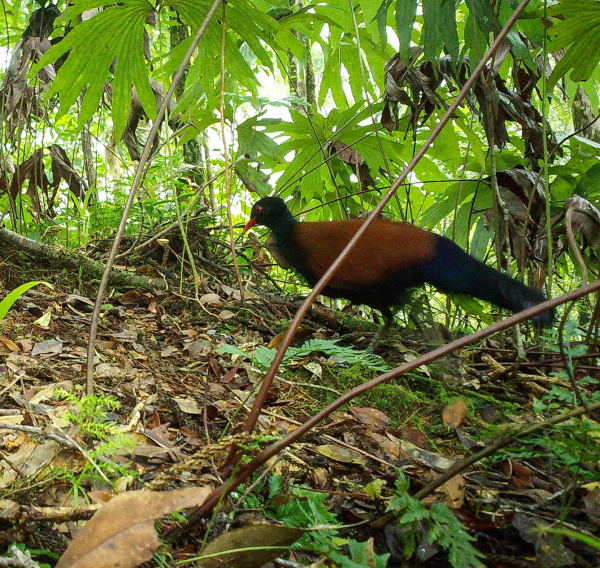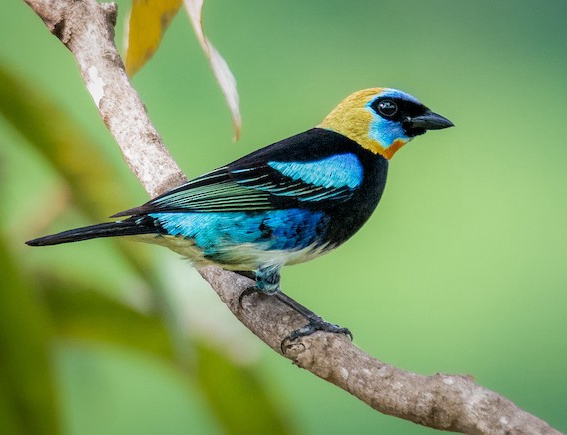Pheasant-Pigeon Reported After 140 Years

The trail camera’s display was tiny, but there was no mistaking the creature it showed – a Black-naped Pheasant-Pigeon – a species that hasn’t been documented by biologists since it was first described and last seen in 1882! Dedicated researchers traversed narrow mountain ridges, crossed and re-crossed rivers that roared through canyons cloaked in dense tropical forest, and endured blood-thirsty mosquitoes and leeches for a month, all in search of a bird that might not exist. They had just hours of searching left before leaving Fergusson Island, located off the east coast of Papua New Guinea.
At that point, expedition co-leader Jordan Boersma imagined their chance of success was less than 1 percent. Out of breath after climbing to retrieve trail cameras, he sat down on a lush hillside to catch his breath and begin looking through the photos from the cameras, not expecting to find anything. “Suddenly I was confronted with this image of what at that time felt like a mythical creature,” explained Boersma, a researcher with the Cornell Lab of Ornithology. “It was, without exaggeration, the most surreal moment of my life.”
The stunning late-September rediscovery could not have happened without guidance from local hunters with intimate knowledge of the island’s forests, the researchers explained, demonstrating the invaluable role of Indigenous communities in ongoing efforts to relocate species lost to Western science. With its existence confirmed, the Black-naped Pheasant-Pigeon is almost certainly the most endangered bird in New Guinea, possibly in the world, which underscores the urgent need to protect its habitat on Fergusson Island, a rugged 555-square-mile isle that is largely undeveloped, but faces pressure from international logging companies.
“This is a huge discovery,” exclaimed Bulisa Iova, an expedition member and acting chief curator of the National Museum and Art Gallery in Papua New Guinea. “I have studied birds for many years, and to be part of this team to discover this lost species is a highlight for me.”
The expedition is part of The Search for Lost Birds, a collaboration between BirdLife International, Re:wild, and the American Bird Conservancy, which funded the field study. The initiative aims to rediscover avian species that haven’t been declared extinct, but also haven’t been seen for at least a decade. The large ground-dwelling pigeon, the Black-naped Pheasant-Pigeon only inhabits Fergusson Island, and it is 1 of the 4 pheasant-pigeon species native to New Guinea.
“To find something that’s been missing that long, it feels remarkable,” said John Mittermeier, director of the Lost Birds Program at the American Bird Conservancy and a co-leader of the 8-member expedition. “It’s extraordinary.”
For more information about the exciting search and rediscovery of the Black-naped Pheasant-Pigeon see ‘Like Finding a Unicorn’: Researchers Rediscover the Black-Naped Pheasant-Pigeon, a Bird Lost to Science for 140 Years | Audubon
And for more information about The Search for Lost Birds see The Search for Lost Birds






